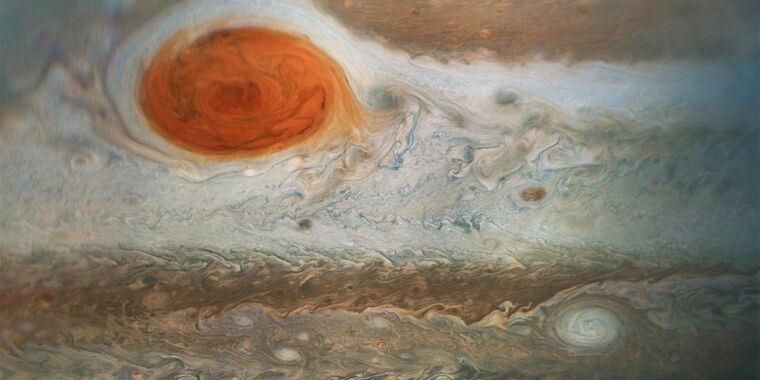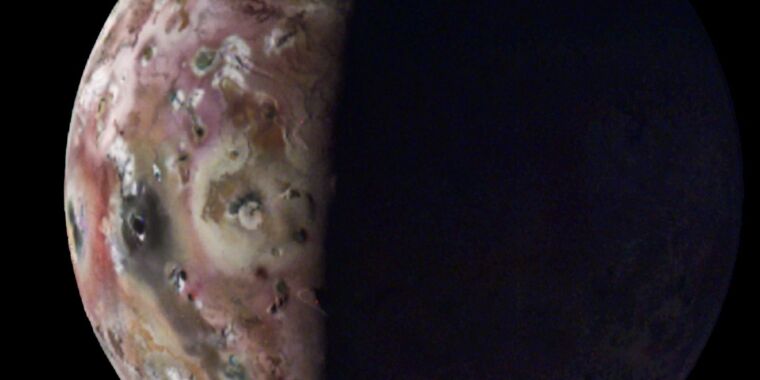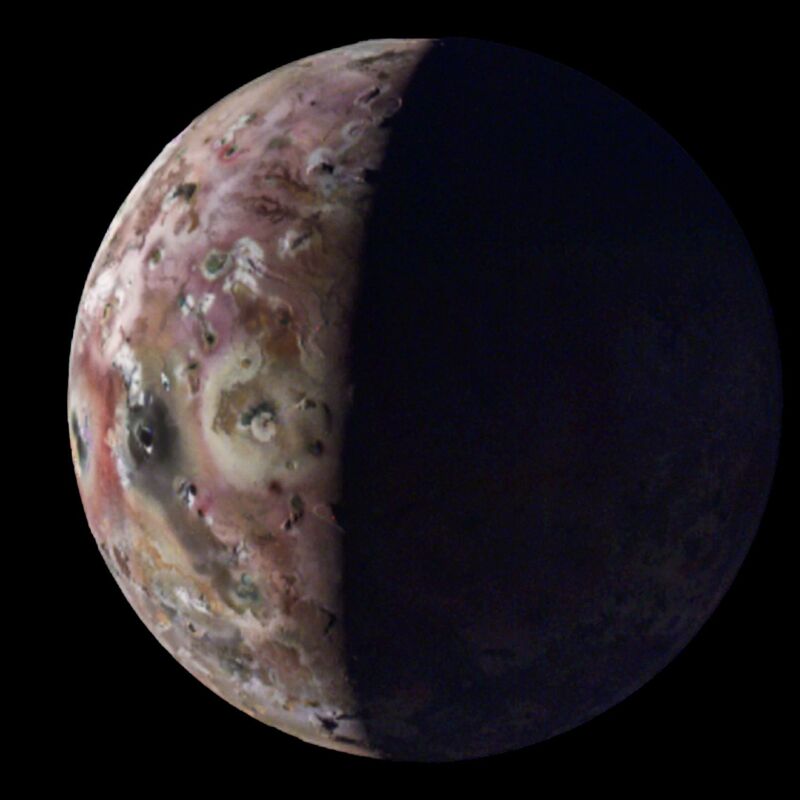Astronomers think they’ve figured out how and when Jupiter’s Red Spot formed
a long-lived vortex —
Astronomers concluded it is not the same and that Cassini’s spot disappeared in 1708.
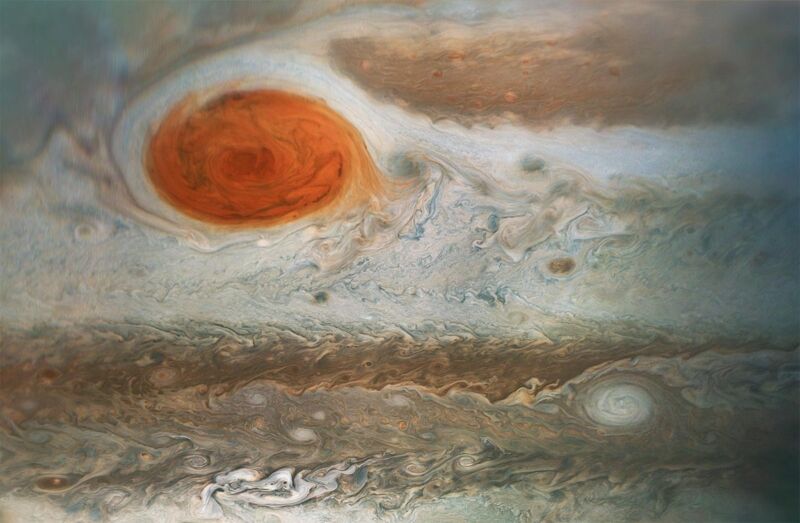
Enlarge / Enhanced Juno image of Jupiter’s Great Red Spot in 2018. It is likely not the same one observed by Cassini in the 1600s.
The planet Jupiter is particularly known for its so-called Great Red Spot, a swirling vortex in the gas giant’s atmosphere that has been around since at least 1831. But how it formed and how old it is remain matters of debate. Astronomers in the 1600s, including Giovanni Cassini, also reported a similar spot in their observations of Jupiter that they dubbed the “Permanent Spot.” This prompted scientists to question whether the spot Cassini observed is the same one we see today. We now have an answer to that question: The spots are not the same, according to a new paper published in the journal Geophysical Research Letters.
“From the measurements of sizes and movements, we deduced that it is highly unlikely that the current Great Red Spot was the ‘Permanent Spot’ observed by Cassini,” said co-author Agustín Sánchez-Lavega of the University of the Basque Country in Bilbao, Spain. “The ‘Permanent Spot’ probably disappeared sometime between the mid-18th and 19th centuries, in which case we can now say that the longevity of the Red Spot exceeds 190 years.”
The planet Jupiter was known to Babylonian astronomers in the 7th and 8th centuries BCE, as well as to ancient Chinese astronomers; the latter’s observations would eventually give birth to the Chinese zodiac in the 4th century BCE, with its 12-year cycle based on the gas giant’s orbit around the Sun. In 1610, aided by the emergence of telescopes, Galileo Galilei famously observed Jupiter’s four largest moons, thereby bolstering the Copernican heliocentric model of the solar system.
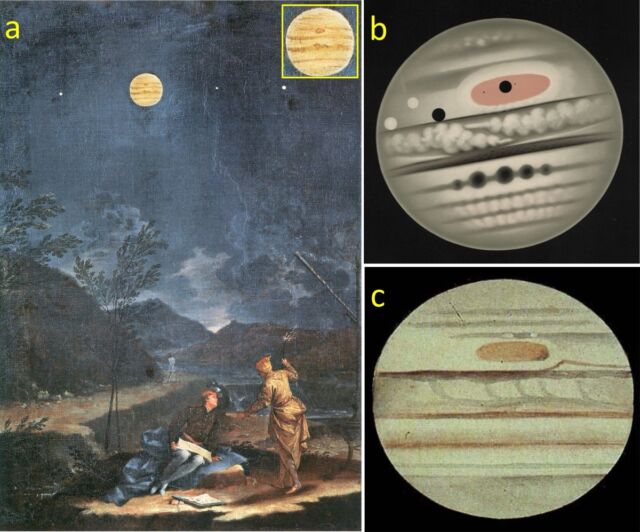
Enlarge / (a) 1711 painting of Jupiter by Donato Creti showing the reddish Permanent Spot. (b) November 2, 1880, drawing of Jupiter by E.L. Trouvelot. (c) November 28, 1881, drawing by T.G. Elger.
Public domain
It’s possible that Robert Hooke may have observed the “Permanent Spot” as early as 1664, with Cassini following suit a year later and multiple more sightings through 1708. Then it disappeared from the astronomical record. A pharmacist named Heinrich Schwabe made the earliest known drawing of the Red Spot in 1831, and by 1878 it was once again quite prominent in observations of Jupiter, fading again in 1883 and at the onset of the 20th century.
Perhaps the spot is not the same…
But was this the same Permanent Spot that Cassini had observed? Sánchez-Lavega and his co-authors set out to answer this question, combing through historical sources—including Cassini’s notes and drawings from the 17th century—and more recent astronomical observations and quantifying the results. They conducted a year-by-year measurement of the sizes, ellipticity, area, and motions of both the Permanent Spot and the Great Red Spot from the earliest recorded observations into the 21st century.
The team also performed multiple numerical computer simulations testing different models for vortex behavior in Jupiter’s atmosphere that are the likely cause of the Great Red Spot. It’s essentially a massive, persistent anticyclonic storm. In one of the models the authors tested, the spot forms in the wake of a massive superstorm. Alternatively, several smaller vortices created by wind shear may have merged, or there could have been an instability in the planet’s wind currents that resulted in an elongated atmospheric cell shaped like the spot.
Sánchez-Lavega et al. concluded that the current Red Spot is probably not the same as that observed by Cassini and others in the 17th century. They argue that the Permanent Spot had faded by the start of the 18th century, and a new spot formed in the 19th century—the one we observe today, making it more than 190 years old.
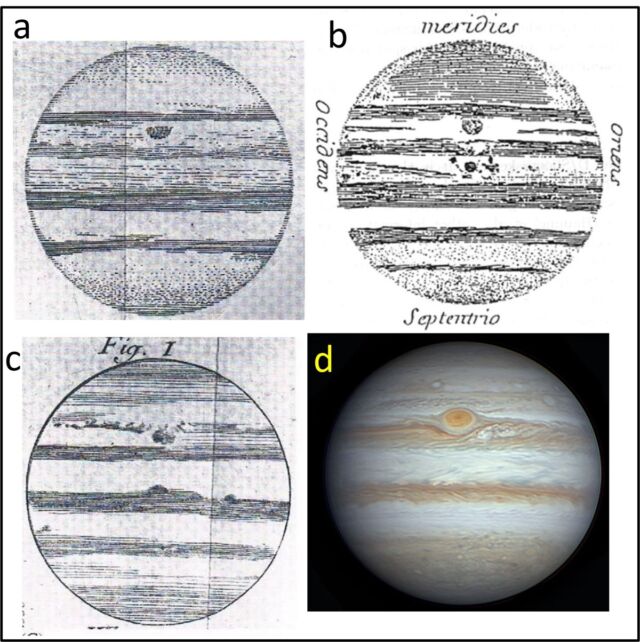
Enlarge / Comparison between the Permanent Spot and the current Great Red Spot. (a) December 1690. (b) January 1691. (c) January 19, 1672. (d) August 10, 2023.
Public domain/Eric Sussenbach
But maybe it is?
Others remain unconvinced of that conclusion, such as astronomer Scott Bolton of the Southwest Research Institute in Texas. “What I think we may be seeing is not so much that the storm went away and then a new one came in almost the same place,” he told New Scientist. “It would be a very big coincidence to have it occur at the same exact latitude, or even a similar latitude. It could be that what we’re really watching is the evolution of the storm.”
The numerical simulations ruled out the merging vortices model for the spot’s formation; it is much more likely that it’s due to wind currents producing an elongated atmospheric shell. Furthermore, in 1879, the Red Spot measured about 24,200 miles (39,000 kilometers) at its longest axis and is now about 8,700 miles (14,000 kilometers). So, the spot has been shrinking over the ensuing decades and becoming more rounded. The Juno mission’s most recent observations also revealed the spot is thin and shallow.
The question of why the Great Red Spot is shrinking remains a matter of debate. The team plans further simulations aiming to reproduce the shrinking dynamics and predict whether the spot will stabilize at a certain size and remain stable or eventually disappear like Cassini’s Permanent Spot presumably did.
Geophysical Research Letters, 2024. DOI: 10.1029/2024GL108993 (About DOIs).
Astronomers think they’ve figured out how and when Jupiter’s Red Spot formed Read More »
